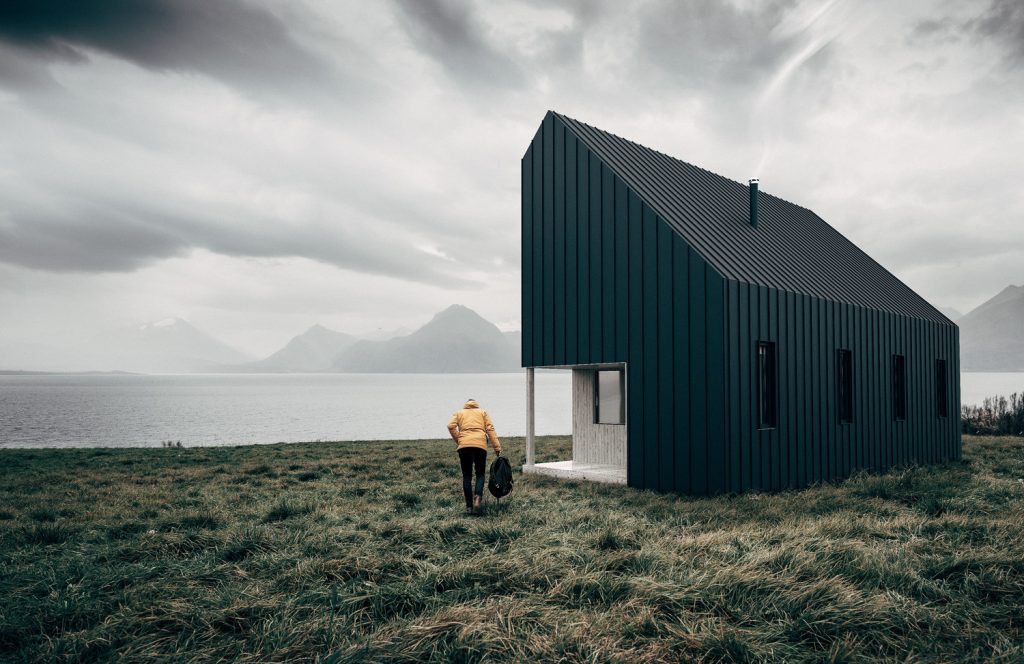DIY Homes Anywhere: Backcountry Hut Company
Flat-pack houses that are built to last

Conceived to design, plan and build small-scale outdoor structures in the harshest terrain, Backcountry Hut Company (co-founded by Wilson Edgar and Michael Leckie of Leckie Studio Architecture and Design) projects are design-driven, sustainable and easy to assemble. Both Edgar and Leckie dedicated years to skiing, trekking and climbing. Edgar spent years as president of the BC Mountaineering Club, while Leckie earned a masters in architecture, then went to work in forestry. He worked for a decade in remote locations—establishing tree-planting camps—and lived on barges, in tents, vans, you name it. It makes sense then, that these partners approach their designs from a truly utilitarian angle.
“It’s all about essentialism,” Leckie tells us, at Interior Design Show, Toronto late last month. “What is essential to build and sustain and in the backcountry? What do you really need to survive and thrive?”

The huts are built on a piling system, and you can construct almost anywhere regardless of grade or topography. The company will design to a range of passive house standards. They can be sustainably engineered down to a (very rigorous) Net Zero standard which means a building with zero net energy consumption. The wood-burning stove is often the go-to solution for heating, but the structures are easily adaptable to geothermal or solar panels. Every square inch of the 670-square-foot layout is utilized—from the open-plan main room for cooking, living and dining; to a lofted sleeping area; bathroom and a covered exterior deck. While the front side is one big glazed window, the layout configurations beyond that are endless.
Everything about the huts is scalable and configurable—from the design process to the build. But it always starts with a design consultation. A buyer comes in and collaborates with the company to configure their space inside and out. “Architects and builders usually cringe when their clients get overly involved in the details of a project,” Leckie says. “But Backcountry couldn’t exist without the hands-on approach of our customers.”

That’s essential compatibility, because, as Edgar says, “Our work appeals to clients with a design aesthetic. They’re designed and built to survive in rugged environments, but the truth is a lot of our business is recreational properties, rural cottages and summer homes.”
No matter the kind of dwelling, flat-pack kits can be shipped almost anywhere—be it by barge, helicopter or truck. Relatively unskilled customers (two people people, generally) can move and position the bulkiest of the components. But if the idea of assembling your own house seems a bit daunting, the company can provide a range of services. On one end, they’ll support you through the process as you do it yourself. On the other, Backcountry Huts can assemble your dwelling on-site. Then, they hand you the keys.
Images courtesy of Backcountry Huts










